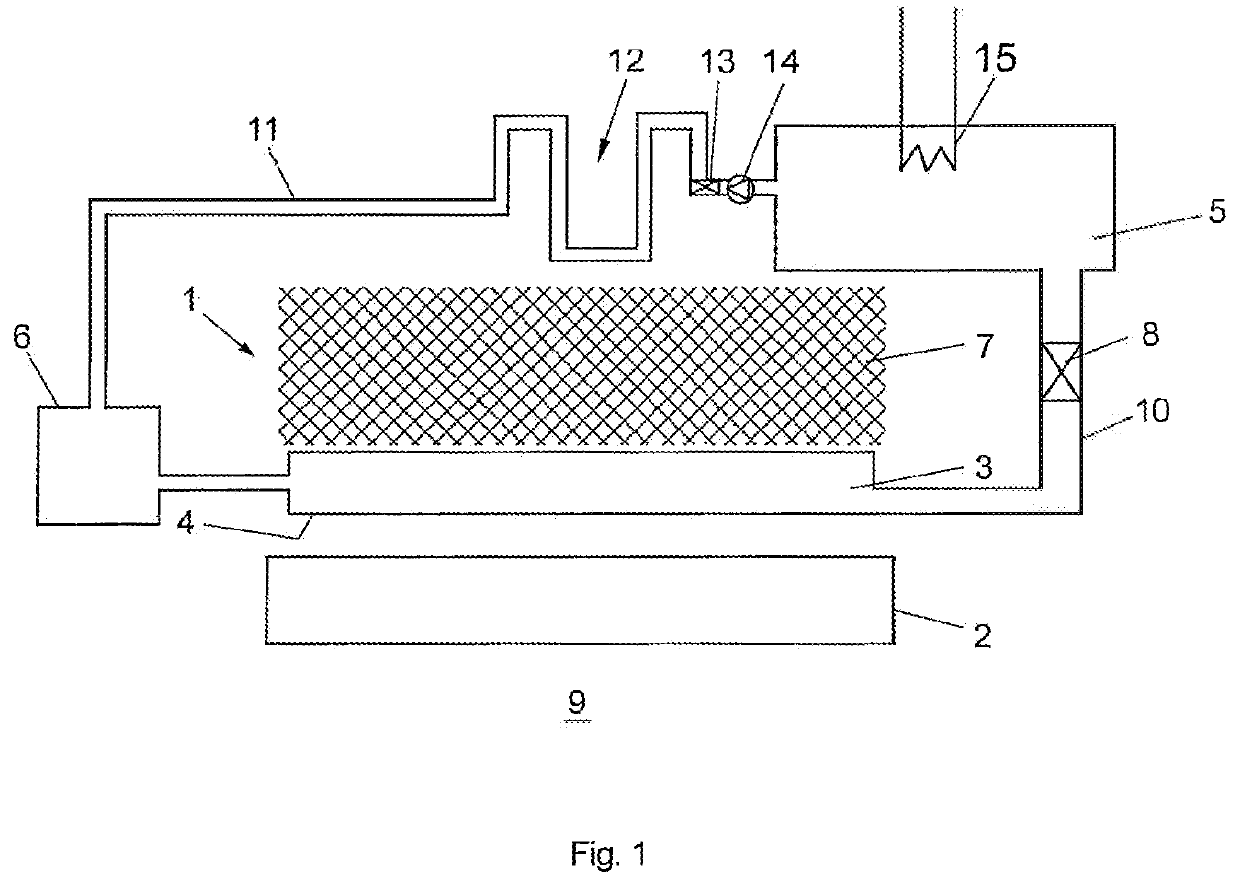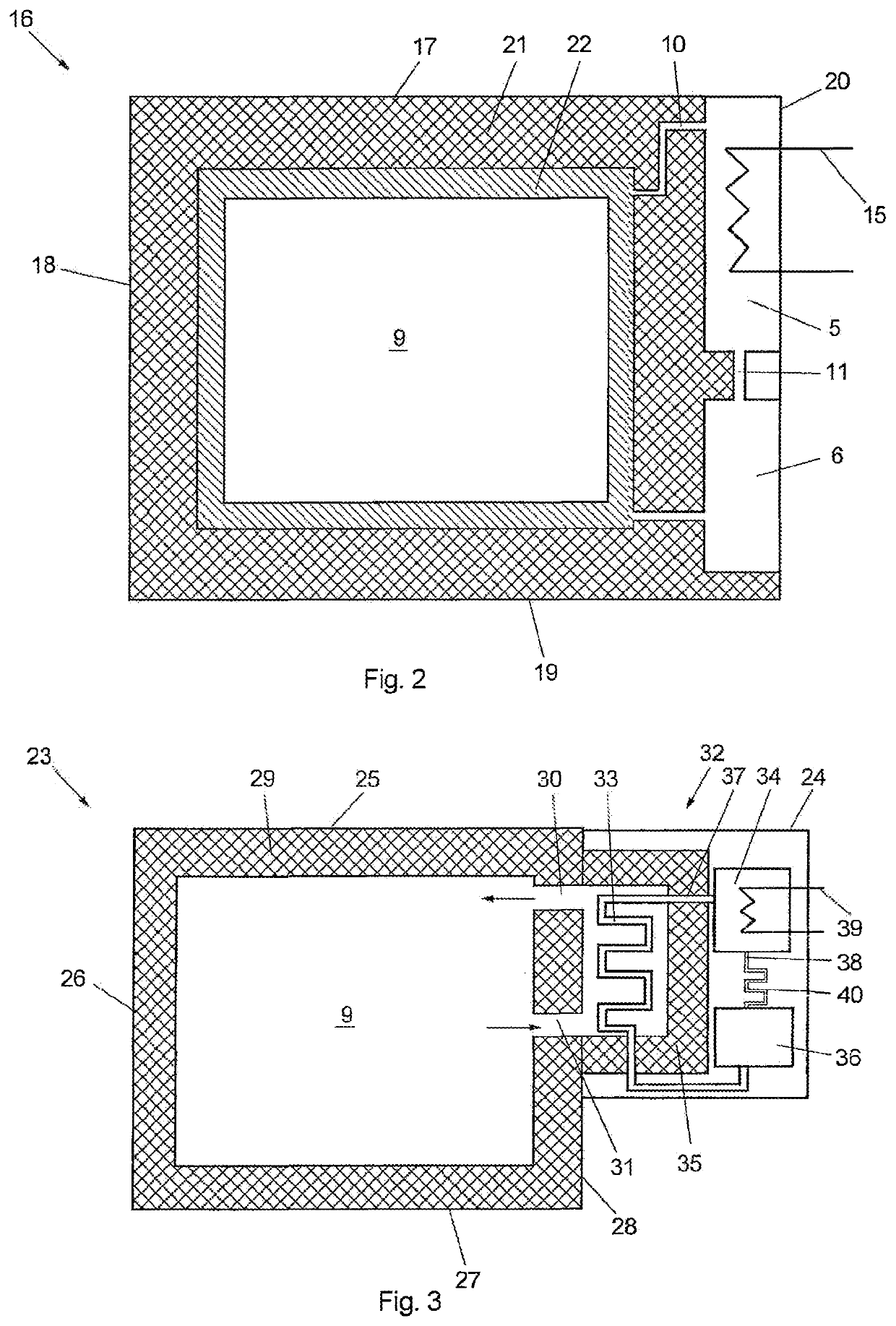Transport container
a technology for transporting containers and containers, applied in domestic refrigerators, refrigeration machines, domestic cooling apparatus, etc., can solve the problems of reducing the efficiency of passive temperature control elements, so as to improve the efficiency of passive temperature control and reduce the weight and/or volume. , the effect of improving the cooling system
- Summary
- Abstract
- Description
- Claims
- Application Information
AI Technical Summary
Benefits of technology
Problems solved by technology
Method used
Image
Examples
Embodiment Construction
[0046]In FIG. 1, a cooling system is shown, which comprises an evaporative cooling system 1 and a latent heat accumulator 2. The evaporative cooling system 1 comprises an evaporation element 3, which is soaked with a coolant, such as e.g. water, and has a cooling surface 4, and a desiccant 5 for receiving evaporated coolant from the evaporation element 3. To supply the evaporation element 3 with coolant, the same is connected to a reservoir 6. The transport of the evaporated coolant from the evaporation element 3 to the desiccant 5 is performed via a channel 10. The common shell or wall of the evaporation element 3, the channel 10 and the desiccant 5 is gas-tight, so that the relative humidity of the gas atmosphere within the evaporative cooling system 1 can be regulated independently from the environment. The evaporated coolant is absorbed in the desiccant 5, which is e.g. a silica gel.
[0047]In that case the desiccant 5 is located on that side of the evaporative cooling system 1, o...
PUM
 Login to View More
Login to View More Abstract
Description
Claims
Application Information
 Login to View More
Login to View More - R&D
- Intellectual Property
- Life Sciences
- Materials
- Tech Scout
- Unparalleled Data Quality
- Higher Quality Content
- 60% Fewer Hallucinations
Browse by: Latest US Patents, China's latest patents, Technical Efficacy Thesaurus, Application Domain, Technology Topic, Popular Technical Reports.
© 2025 PatSnap. All rights reserved.Legal|Privacy policy|Modern Slavery Act Transparency Statement|Sitemap|About US| Contact US: help@patsnap.com


